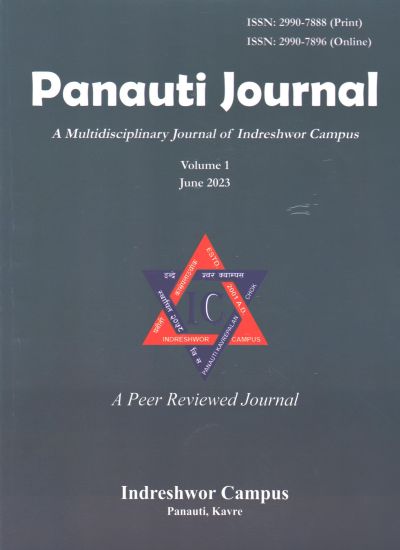Face-to-Face and Virtual Instruction Practices in Nepali Schools
DOI:
https://doi.org/10.3126/panauti.v1i1.63548Keywords:
blended approach, COVID-19, paradigm shift, pedagogy, virtual learningAbstract
The COVID-19 pandemic affected the education sector along with the other sectors in Nepal. The education system and its major components have been disrupted by the pandemic. In this regard, I have prepared a research article to explore the status and practice of face-to-face and virtual instruction in school education in Nepal.
The first objective of this paper is to assess the present situation of the face-to-face mode of schooling. The second objective is to analyze the current state of virtual learning and the third objective is to study the change from face-to-face and virtual learning in the education system. This research is qualitative one. This is delimited in the secondary schools of the Gorkha Municipality. I have selected the schools of the study area purposively. I have used non-participant observation, focus group discussion, and open-ended interviews to generate information and it was the primary source. The COVID-19 pandemic has created an alternative mode of instruction, i.e., a virtual mode. I have found that depending solely upon the virtual mode of instruction during the COVID-19 pandemic situation has been less effective in the study site due to poor internet access and electronic devices. The blended approach has been more effective in the instructional process.
Downloads
Downloads
Published
How to Cite
Issue
Section
License
Copyright (c) 2023 Panauti Journal

This work is licensed under a Creative Commons Attribution-NonCommercial 4.0 International License.
This license enables reusers to distribute, remix, adapt, and build upon the material in any medium or format for noncommercial purposes only, and only so long as attribution is given to the creator.




